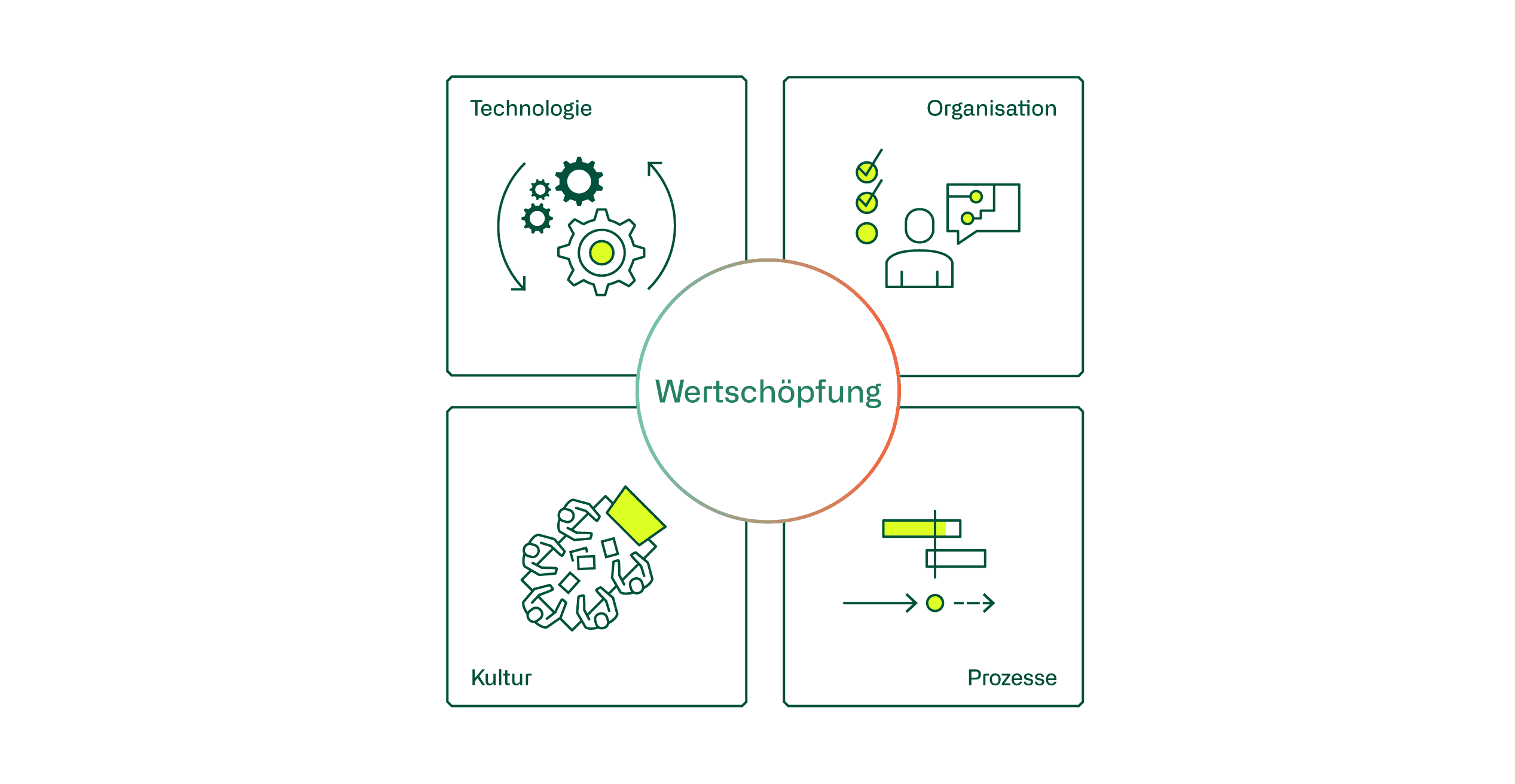Blog
Challenge of agile service organizations
What characterizes an agile organization and how rocky is the road to it?
An agile organization is characterized by aligning its activities and goals with the value creation of the company. The focus is on customer orientation and alignment of all services with the customer experience.
Sure, this sounds good and right. But anyone who has ever been confronted with the task can confirm from experience that this can be a rocky and long road. This blog goes into some hurdles that we experience again and again in our projects.
What characterizes an agile service organization?
An agile service organization puts business results at the center. This is done by aligning all activities in the enterprise and developing appropriate capabilities in the organization that focus on services to achieve value for customers.
The agile organization consists of teams that combine a high degree of responsibility, competencies as well as expertise. These interdisciplinary teams consist of the necessary resources that support the service throughout the entire lifecycle. In order for these agile teams to work efficiently, the following framework conditions must be created:
- Focus on the services and their value chains with an appropriate roadmap
- Introduction of uniform governance structures and an agile framework for collaboration
- Understandable and flat structures. The number of teams can vary and depends on the requirements
- Shift of competencies from traditional management to agile teams and service owners respectively
- Introduction of agile principles such as iterative approach, empirical service control and establishment of a feedback culture in the organization
The entire organizational framework usually has to be redesigned in order to successfully transform the service organization. This concerns specifications, responsibilities, interfaces, technology adaptations, structures, etc. The core competencies required for the individual activities can be suitably described in the four dimensions of technology, processes, culture and organization.

What are the challenges in practice?
Transforming a company with a hierarchical line organization into an agile, fully networked organization sounds very good in theory. But practice shows that transformation is a very big challenge that affects all four dimensions.
Technology
The use of new, mostly cloud-based solutions is not only the basis of digitization, but also demands and promotes agility in order to react quickly to changing requirements. Essential here are the creation of transparent structures and the automation of all repetitive activities. Indirectly, cloud technology also achieves a standardization of the platform. However, a greenfield approach is rarely possible and various challenges must be dealt with in reality:
- Migrating a legacy environment is complex, challenging and costly. This is not least due to the lack of harmonization and the rigid integration into the business environment.
- In many cases, the know-how for the grown, complex legacy environments is not available to a sufficient extent.
- The optimal starting point for platform transformation is not easy to find, or prioritization requirements shift the focus to other issues.
- The costs for cloud services are sometimes difficult to plan.
- Governance basics such as data classification, cloud strategy, security concepts are often missing.
Organization
An organization is defined by the way it performs tasks and achieves service goals. By means of newly formed work groups, a shift from rather rigid hierarchical structures to agile teams with the appropriate competencies is sought.
For companies that traditionally have a hierarchical organizational structure, the introduction of a purely agile organization becomes a major challenge. This is not least because very ambitious goals are usually set by management. In addition, the organization is also challenged a great deal in ensuring traditional operations and the parallel transformation of areas into the new agile organization. Typical questions and challenges during organizational transformation are:
- What is the appropriate strategy and governance for organizational transformation?
- How does the transformation of the service catalog including the supplier services into the agile further development have to take place?
- What is the impact of transformation on the mission and the new roles/teams responsible, without losing focus on service value creation?
- There is a tendency for key people to be assigned to too many teams, negatively impacting their productivity.
- In the composition of the teams, too little conscious attention is often paid to filling suitable people with the new roles. This often has a negative impact on the efficiency and effectiveness of the teams.
Culture
Corporate culture is shaped by values and behavior. The environment can be divided into three groupings:
- The leadership team (management), which should exemplify its own guidelines (walk the talk)
- The individual team, which is as strong as the weakest link.
- Each team member with individual preferences as well as strengths and weaknesses
Agile organization theory states that cultural changes lead through all organizational levels. In an agile organization, the manager is supposed to lead less, but instead show more of the framework and prepare the working bases, the teams are given more responsibility and a team member is given more competencies. Since people fundamentally desire stability, this leads to a potential contradiction in the agile approach.
- How do you communicate the new values to create perspective and security in a rapidly changing environment?
- How are employees to be empowered in dealing with the new responsibility?
- How do employees cope with the new open management style?
- Decisions must be made and supported by the team.
- The classic manager, who acted as a hierarchical decision-maker for many years, must adopt a new management style as a service enabler.
Processes / Structure
The orientation of the necessary processes is geared towards supporting the value streams. This makes different characteristics possible. The processes must individually reflect the value streams and the agile way of working. How many and which processes are needed in an organization so that it functions autonomously cannot be answered simply like that. The processes and the process landscape should adapt to the teams and their methodologies that they use. It is important that the processes and interactions are mapped into an adequate IT Service Management (ITSM) or Enterprise Service Management (ESM) tool to manage process fidelity. We see further challenges in process mapping in the following areas:
- There is no service catalog and thus there are different goals or expectations for the processes.
- The perception of service matriculation varies across teams.
- Basics such as specifications, connections, dependencies and interfaces between the remaining hierarchical organizational units and the new agile teams are missing.
- The conversion of the processes is very complex due to various dependencies and the need for parallel use in the old and new value creation.
Conclusion
Transforming an entire business organization takes time and the necessary patience. There is no blueprint for rapid implementation. The change to an agile organization should primarily be characterized by optimizations and adjustments to the value chains and thus the service portfolio. The appropriate and necessary agility of the service organization is predominantly based on the flexible composition of the required teams and their activities. Employees are a very important part of the organization and should be involved in the organizational transformation accordingly at an early stage. A new organization should be introduced in small steps with the inclusion of processes, structures and technologies. Traditional organizations and corporate cultures can only be changed over a longer period of time. For rapid success, a hybrid organizational approach can help. This means that existing and proven service models are compatible with new agile approaches in the organization. With such a hybrid organization, the transformation can be simplified and implemented according to requirements.
Does every organization now have to adopt agile?
We see this as similar to other market trends, e.g., the cloud. At some point, there will be no way around it, because the world is developing in this direction and enough advantages will arise from it. Each company must decide for itself what form an agile service organization should take and in what timeframe it should be introduced.




